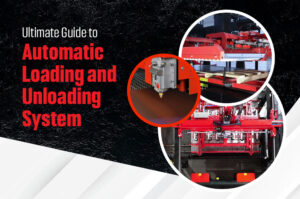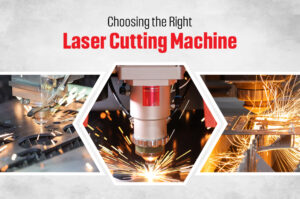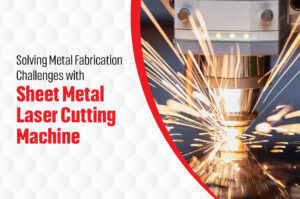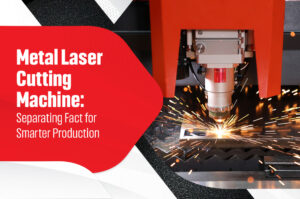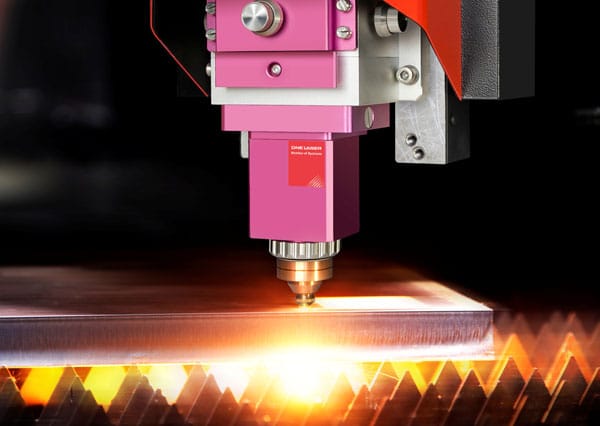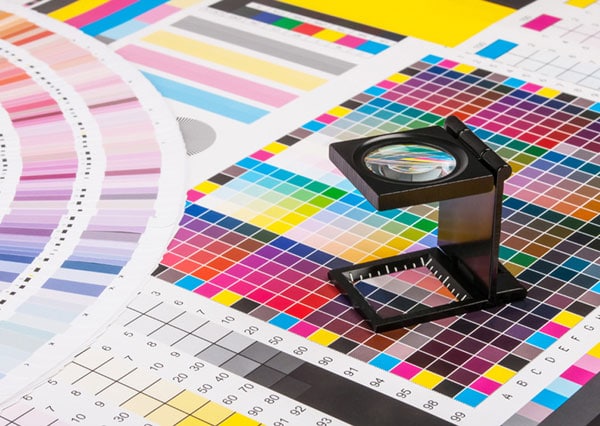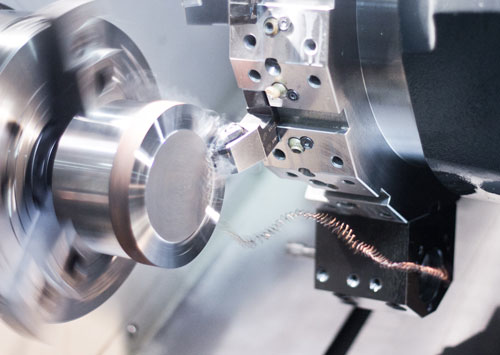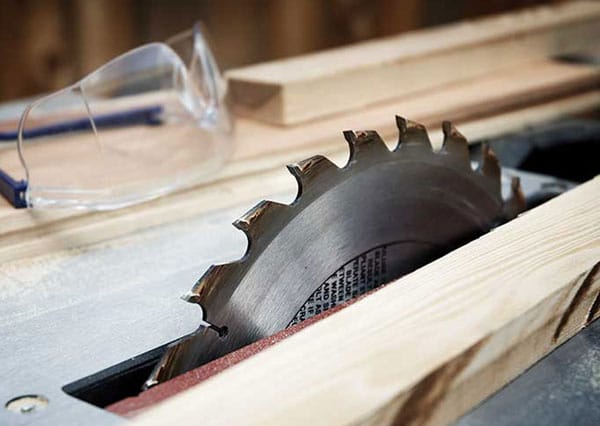A metal laser cutting machine is a cutter that operates on the use of a laser beam that is powerful enough to neatly and perfectly cut through the metal. It involves focusing a laser on the metal and melting or burning the material to cut the design needed on it. This technology has a history of its inception from the 1960s and has a long way to transformation from the first generations of those experimental machines to the contemporary ones that are capable of working on several metals with the most complex shapes. In manufacturing, there is normally a need to cut through metals, and this is made possible by the metal laser cutting machines since they are very accurate and flexible. They are widely employed in automotive, aerospace, and electronics industries where small and accurate metallic parts are necessary. Due to the versatility in modeling thin sheet metals and their capacity to yield near-net shapes without significant wastage, they form crucial equipment of manufacturing industries of the current society and economy.

How Metal Laser Cutting Machines Work
Laser cutting is a method used in cutting materials by aiming a high energy laser beam onto the metal required to be cut. The following are the major principles and elements on which this process depends so as to be very effective.
A basic Concept Laser is a tool that directs a light beam of a given wavelength onto the surface of the metal. The laser produces a high amount of heat which either causes the instant fusion of the metal or vaporizes its section.
Different types of lasers are used based on the application
CO2 Laser Cutting Machine: These lasers operate with carbon dioxide as the medium and are ideal if used in cutting thick materials accurately.
Fiber Laser Cutting Machines: These lasers have high efficiency and are intended for cutting thin and reflective metals, which use fiber optics.
Parts of a Laser Cutting Machine
Laser Source: This is the location where the laser beam originates from. It can be a CO2, fiber or Nd source.
Cutting Head: This is done by pointing the cutting head in the direction of the metal and focusing the laser beam at a specific point.
Motion Control System: This system controls the movement of the cutting head in the X, Y, and Z directions to allow the head to follow the design path.
Material Handling System: It holds the metal in place and controls the material that is introduced into and that is removed from the cutting zone.
Cutting Process
Pre-Processing: The stage in which designers generate the digital design and prepare the machine is known as this stage. This entails setting the cut paths and reviewing other settings in relation to the type of metal and thickness of the material to be cut.
Actual Cutting: The laser beam follows a path that is programmed. In this case, the beam comes into contact with the metal and the metal either liquefies or disappears converting into gas forming the required design.
Post-Processing: In some cases, after the cut has been made then the metal may require to be cleaned to remove any remnants. The final touches of the products, for instance, deburring, aim at improving the quality of the end product. Thus, laser cutting can be credited for being one of the most significant tools in today’s manufacturing process due to the infusion of technology and process.
Laser Cutting Machines for Metals: Classification
CO2 Laser Cutting Machines
Features: CO2 laser cutting machine use a gas laser having a wavelength of 10. 6 micrometers. Metal, plastics and ceramics are powerful when it comes to cutting off many materials. It is characteristic of these machines that they ensure high accuracy and can be used to cut dense metal plates.
Advantages: Generally, CO2 lasers are popular due to their capacity for high-thickness cutting with high-edge sectors. They also compensate well for speed as well as accuracy of cutting. Also, they are flexible and may work with any kind of metal.
Limitations: There is also the problem of the efficiency of CO2 lasers which is lower while cutting that type of materials for instance aluminum. It also has higher power consumption than fiber lasers; therefore, it is more expensive to run.
Fiber Laser Cutting Machines
Features: Fiber laser cutting machine basically apply a solid-state laser with a wavelength. These machines are efficient and require limited space; consequently, they are commonly used. These cutting discs are used more for cutting thin to medium-thickness metals.
Advantages: Fiber lasers cut aggressively and are therefore relatively efficient, meaning that the chance of their operational costs being high is slim. They are also useful in cutting such materials as reflective ones such as aluminum and copper. In a shop, this design implies that limited space will be used by the machine.
Specs to Look for in Laser Cutting Equipment for Metals
Cutting Speed and Precision
These aspects concern one of the key issues affecting efficiency and receive a high rating concerning their importance. Higher cutting rates can improve productivity; a key factor in applications where many parts need to be produced. But this speed should not affect the precision of the drawing map in a negative way. Control in this case means that the correct cuts are made so that the parts fit in the right manner and are of the correct size as designed. Various machines that have more sophisticated control structures are capable of balancing the velocity and precision manufactured in such a way that can help the manufacturers produce quality goods in the fastest and most efficient manner.
Material Compatibility
By specifying material compatibility the capabilities of the laser cutting machine in terms of which metals and up to what thickness are capable of being cut are defined. Different lasers work best with various metals: Different lasers work best with various metals:
CO2 Lasers: Suitable for cutting thicker materials and a variety of materials that are different from metals.
Fiber Lasers: Perfect for cutting thin to average thicknesses of metal, including metals with reflection such as aluminum.
Understanding the type of metal and thicknesses that a particular machine can undertake to cut shows that you are meeting the requirements of your projects.
Power and Energy Efficiency
In the case of laser cutting machines, the issues of power and energy have impacts on the buying as well as operating costs and efficiency.
CO2 Lasers: Tend to use more energy in most cases but are capable of cutting thicker materials.!
Fiber Lasers: Greater efficiency and often cheaper to run because they produce more efficiently and achieve faster cutting rates.
Automation and Integration
The use of automation and integration increases the effectiveness of the process of cutting. Forced loading and unloading systems can add considerably to the yield since there will be a lesser measure of manual intervention and downtime.
Automated Loading: Cuts down the time required to feed the machine with material hence increasing the time the machine runs before it has to be commanded by human interferences.
Automated Unloading: This contributes to the timely clearance of finished parts from the production line so as to enhance productivity.
Benefits of Metal Laser Cutting Machines
High Precision and Quality
Metal laser cutting machines remain well appreciated because of their cutting accuracy and the quality of the cuts made. Compared to the other conventional cutting techniques, which may result in jagged edges or distortions, laser cutting gives clean cuts while being precise. Such accuracy is very important in ensuring that parts will not only fit each other correctly but also that they are precisely as they have been designed to be. For instance, plasma cutting or mechanical shearing normally necessitates some finish work to arrive at the kind of precision that is integral to laser cutting.
Versatility
Laser cutting machines are surprisingly easy to work with in terms of flexibility. Its range of flexibility can cut different types of metals such as steel, aluminum, copper among others. In addition, these machines can also work with shapes, and patterns that are difficult for other cutting technologies to handle. Depending on the possibility of having exact patterns or making large sheets with numerous diverse cuts, laser machines can meet different needs, and as a result, laser machines are suitable for simple and complex projects.
Reduced Material Waste
Of all the features of laser cutting one of the most important aspects is the conservation of material. Due to its high-energy density, laser cutting creates very small and precise kerf, or the width of the cut leaving very little waste as compared to other cutting technologies. For instance, mechanical techniques inevitably produce a greater amount of waste material because they take wider slices and manage the materials more roughly. The precision of laser cutting in eliminating wastage is advantageous in the overall understanding of material consumption which paves the way for a better technique of cutting costs and better for the environment since it conserves material.
Lower Operational Costs
Hence when comparing laser cutting with the conventional techniques of cutting, the overall expense of using laser cutting machines may be significantly cheaper. The only disadvantage of a laser cutting system is the initial cost, which is still offset by the lack of secondary operations, less scrap loss, and an overall higher rate of production. Other methods could be costly in the final touches, maintenance, and also more waste of materials. The costs of laser cutting are somewhat higher than for other cutting methods, but they are justified by the speed and accuracy of the process, which is why laser cutting is ideal for most manufacturing processes.
Common Applications in Manufacturing
Automotive Industry
In automotive, metal laser cutting machines are a vital tool when it comes to manufacturing better and more efficient spare parts. For example, they find makers of products such as brackets, panels, and chassis. Laser cutting is applied in the contouring of intricate patterns for making lightweight components which increases the performance and fuel efficiency of the car. One is the manufacturing of exhaust parts for automobiles in which accuracy as well as endurance is very important. Advantages of laser cutting include accuracy of cuts and quality that is safe and can meet the recommended performance benchmarks.
Aerospace Industry
PVD coatings are widely used in the aerospace industry for manufacturing those parts where precision and reliability are of most importance and for this, metal laser cutting machine is employed. Laser cutting is applied for cutting small sections of turbomachinery components and structural elements of aircraft. In these parts, there are usually special shapes and close dimensions which are laser technologies friendly. For instance, laser cutting plays a critical role in the production of lightweight, high-strength parts that are vital in determining the weight of aircraft hence the fuel consumed in their operation.
Electronics Industry
Laser cutting machines are widely used in the electronics industry for manufacturing parts used in gadgets such as mobile devices, laptops, and circuit boards. They made intricate cuts on metal casings and cabinets of electronics so that the structure would fit well and work according to its use. For instance, the use of laser cutting applies the fine grids and contact points on the leading circuit boards. This precision is useful in ensuring that high performance and reliability are maintained on electronic devices.
Sheet Metal Fabrication
Sheet metal fabrication is another application that can benefit much from metal laser cutting machines. These machines include shear, brake, nibbler, punches and die that are used to cut sheets of different shapes and sizes with maximum precision to produce small parts for appliances, machines and furniture. For instance, the fabrication of metal parts for use in the manufacturing of kitchen appliances entails laser cutting to guarantee the right size and polished aspect of the component. Besides, laser cutting can easily manage the orders being made to order, which is a plus for flexibility in manufacturing.
Maintenance and Troubleshooting
Regular Maintenance Procedures
Any metal laser cutting machine will require maintenance to be done it from time to time to ensure that it works properly. Some of the common activities that are handled are general washing of the machine and checking of its settings. Maintenance includes wiping off dust in the laser lens, mirrors as well and the cutting table to enhance the performance and avoid the incorporation of foreign items. Calibration checks need to be performed frequently for one to realize that the reading is accurate and in line as needed. This encompasses the focusing of the laser as well as ensuring that the cutting head will translate along the desired path. These maintenance tasks enable the machine to have a longer life since its cutting quality is determined by the right maintenance of the machine.
Common Issues and Solutions
1. Poor Cut Quality
Issue: In the case where the edges of the cut are in some ways jagged or uneven, this implies that the lens cleaning is poor or the laser is out of alignment.
Solution: It is also important to note that cleaning of the lens and mirrors should be done severally. Insight and make optimizations regarding the position of the laser so that it is pointed the right way and focused on the material properly.
2. Inconsistent Cutting Speed
Issue: Thus, deviations in the value of cutting speed can be caused by problems with the system of motion control or equipment mechanisms.
Solution: Look for any deformation, wear, or damage on the motion control system. Oiled and realign all parts of a mechanism that move or turn as may be called for.
3. Unusual Noises
Issue: Loud and unexpected sounds during usage can be a sign that something is wrong with the bearings and other parts of the equipment.
Solution: A general inspection by the human eye should also be made to look for any signs of loose or damaged parts in the equipment and these should be fixed. Periodically jam components to decrease the amount of wear.
4. Laser Power Fluctuations
Issue: If the laser power varies then it is recommended to check on the power source or the laser producing unit.
Solution: Check the wiring and connections of the power supply and replace any or those that are damaged. Check that the laser source is correct.
5. Material Handling Problems
Issue: Problems with material handling are that the position may be off or the cutting pattern subpar.
Solution: It should also be correctly orientated, and more importantly, firmly and tightly located. Verify the condition of several material handling equipment, whether they need fixings or modification.
It is necessary to understand that every industrial tool may face some problems on the way to performance; the main thing is to know how to prevent and, if needed, solve them, In this context, let me draw your attention to some of the most typical issues and routines that are important concerning metal laser cutting machines: Addressing these challenges and carrying out necessary routines, you will be able to maintain the efficiency of your tool. It is also important to note that the metal cutting machine maintenance checklist not only wards off issues but it also guarantees the optimum functioning of your machine, the quality of the cuts achieved and its durability.
Conclusion
Metal laser cutting machine is taking up a vital position in the field of manufacturing with great accuracy, flexibility, and speed. At Business Point International, UAE we are the market leader in Laser cutting solutions. Our product range of laser cutting machines such as CO2, fiber and digital printing solutions for various industries such as automotive, aerospace, among others. When selecting Business Point International, you acquire innovative and premium equipment that minimizes material loss, improves the quality of cuts, and increases efficiency. Do not let this be a missed opportunity to advance the efficiency of your manufacturing line with our advanced technology. Contact us today to find out how our solutions will ensure your success and put you one step ahead of your rivals. Choose Business Point International as your manufacturing solutions provider for the best results in manufacturing.




